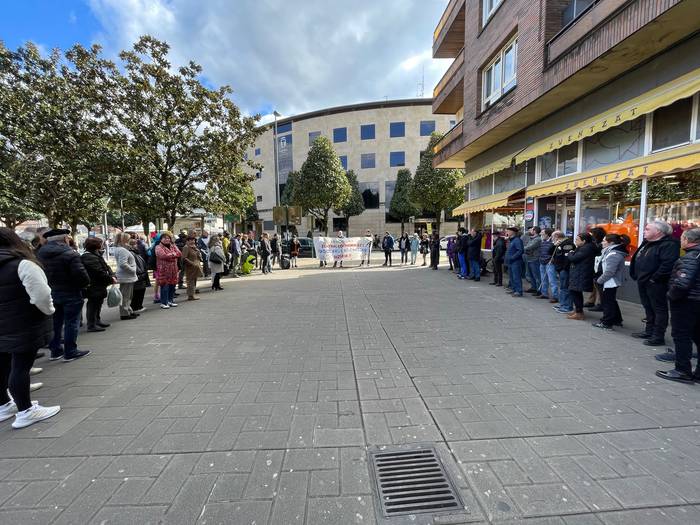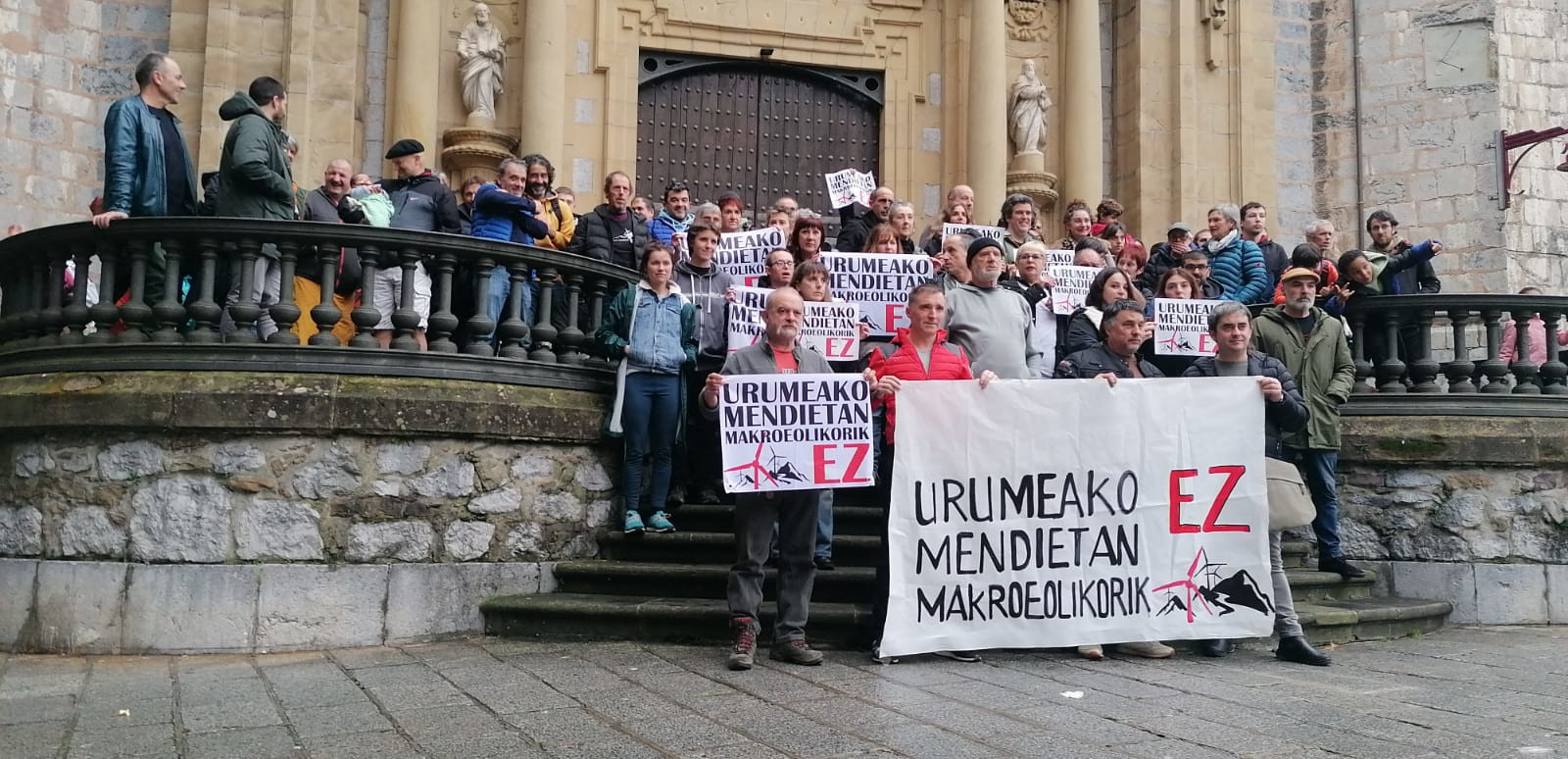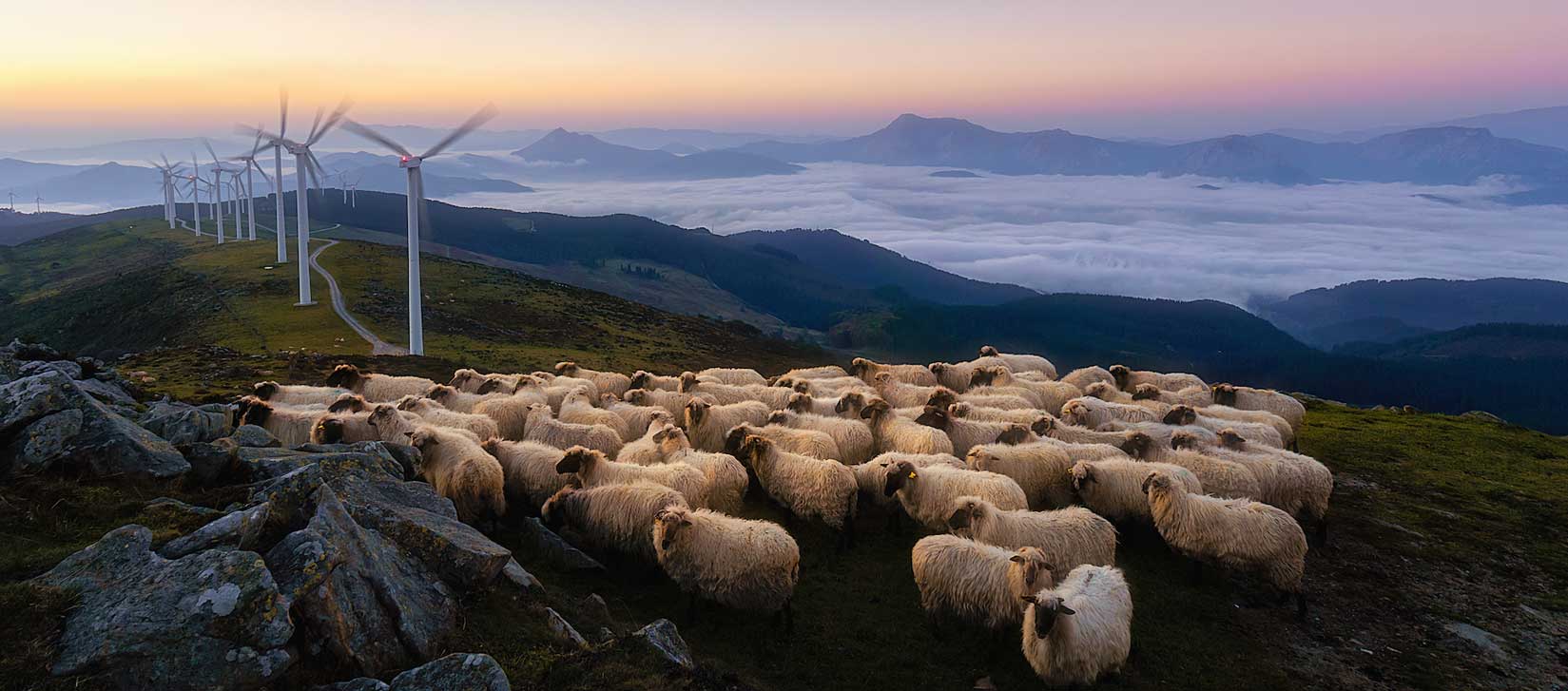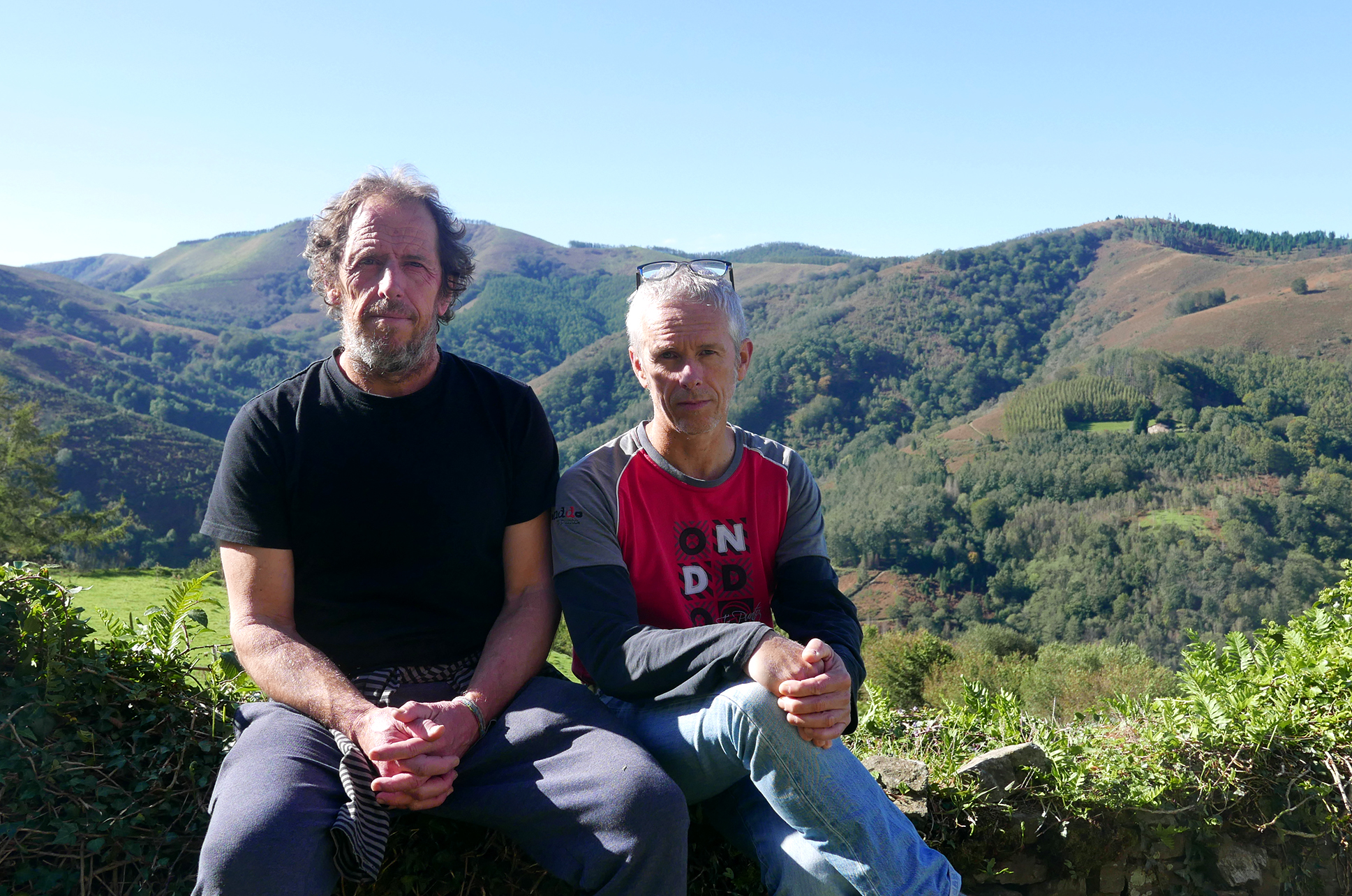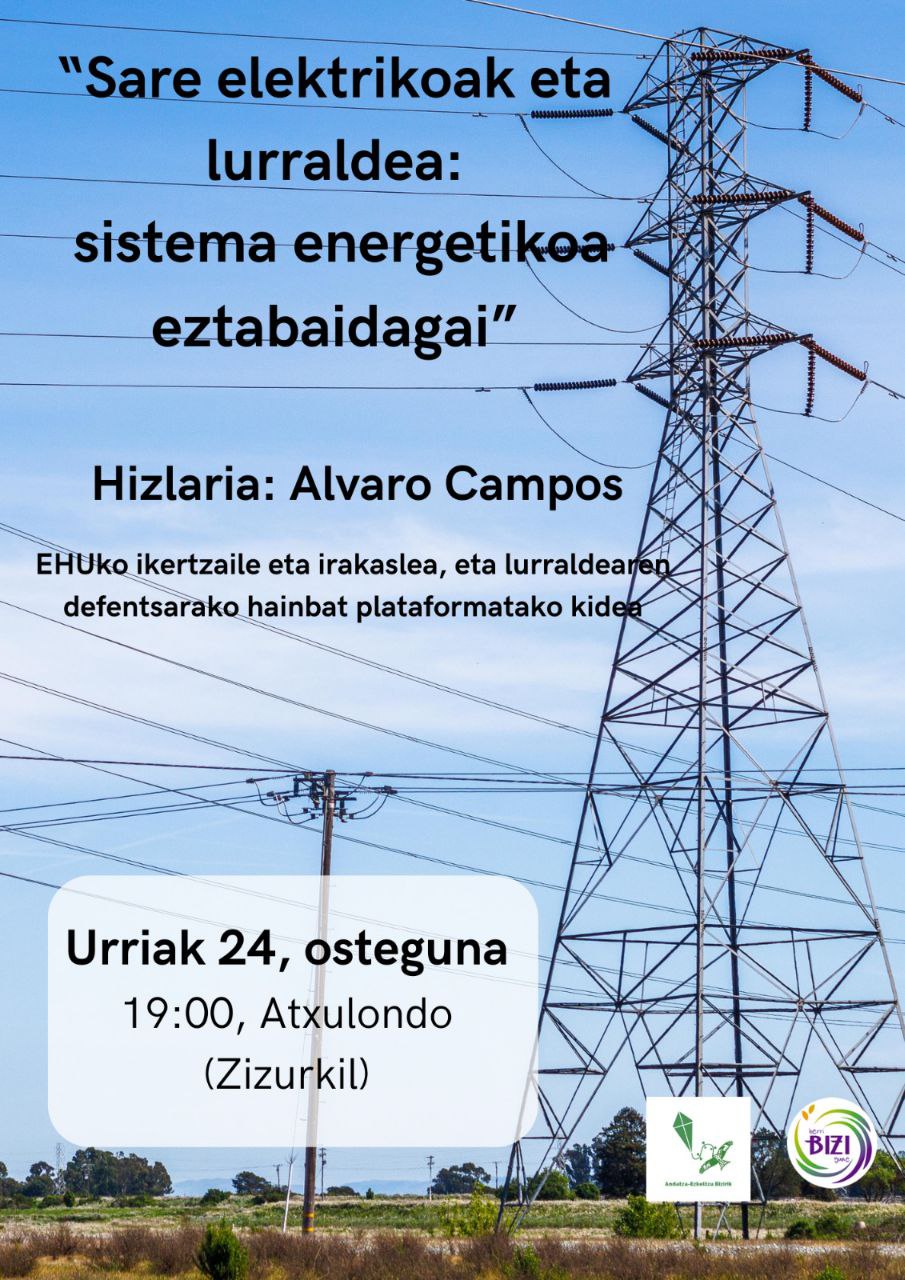“Deputies have not deliberately made endangered species management plans to be able to put projects such as wind farms”
- Aitor Leiza is a member of Itsas Enara and Zumaako Natur Taldea. As a young boy, he became fond of birds and was surprised by the works of a local photographer who wondered “Are all the birds here that appear in documentaries?” and began to learn more about birds using books. On 2 May he will give a Zizurkil conference on birds living in the Ezkeltzu area, which the company Green Capital wants to install in it: “What we do not know we cannot love. So the first thing I'm going to explain is which birds you can see in Ezkelzu. What are the main migrants who can pass through there, who are the ones who live there… I’ll also show some pictures taken in Ezkelzu,” the Zumaiarra bird announced.

Andatza-Ezkelu Bizirik! Organized by the group, Aitor Sima will offer a talk on May 2. Plazida Otaño will take place in the library room from 19:30. Andatza-Ezkeltzu Bizirik! This bird talk we can see in Ezkeltzu! The group has prepared an exhibition in which the effects of the wind power plant that the private company wants to implement between Zizurkil and Usurbil will be exposed for two weeks.
On Saturday, 13 May, in the morning, the group organized a special exit to the high of Ezkelu, in which, with the help of explanatory experts on birds, historical heritage and plants, a circular tour of tomorrow will be held, rounded with lunch. At 9:30 Zizurkil Goiko Pedro Mari Otaño is in the plaza.
We called the expert bird Aitor Leiza to ask about his conference.
What do wind mills affect birds?
The Basque Country is situated at a strategic point between Africa and North Europe: millions of birds pass each year over Euskal Herria. There are two strong flows, one marine and the other terrestrial. Migratory birds travel to Africa to spend the winter: there are birds passing Africa in winter to Madagascar and in summer they will nest to the Arctic. Birds have natural footsteps, they're going to pass more places than others. But they have to go through Euskal Herria, yes or yes, and they can go anywhere. Migrations occur mostly at night and at night you don't see windmills -- we always remember birds, but besides birds, there are also migratory bats and they have a similar problem to birds.
Migrants live in our mountains in three ways: they come to spend the winter from the North to our shores and some go down to Africa, but some specimens are here passing the winter. Other birds live there all year round, and others come for breeding from Africa.
On the other hand, there are predators. Their nests can be located in valleys, 200 meters or a kilometer below the top, but their feeding areas are the peaks. They eat rats, mice, snakes found in these summits. Many times they do not collide with the first windmill, but due to the turbulent winds that produce the arms of the windmill, they collide with the next windmill.
Which birds and plants that live in Ezkeltzu attract your attention? Why?
Predatory discards are the most affected. Among the predators is the red milano, in which nesting has begun and that is new, not even the only specimen that did not exist ten years ago.
From a plant point of view, we must bear in mind that in Euskal Herria the real forests are very scarce, since the forest is a very complex system. These complex systems were destroyed a hundred years ago, few hectares remain preserved and unrelated. In addition, the loss of agriculture means the loss of the hedges of prairies, mosaics and margins (shrubs and shrubs) we have on the mountain. These structures will disappear along with the baserritars. In Ezkeltzu, for example, the red firefly is another declining ecosystem for birds.
There are several plants and birds on the list of threatened species in the Basque Country. In the case of these threatened species, the law requires a study to determine what to do not to lose them and how this environment should be managed. Perhaps in order to be able to carry out these projects the management plans for each of these species have not been intentionally drawn up, since if management plans were made some of these actions might not be carried out. It is for the Basque Government to designate the endangered species, but it is for the Deputies to draw up the management plan for each of these species. And among the animals and plants threatened on the government list, very few have drafted the management plan. Furthermore, it is not just a question of drawing up the plan, but of reviewing it within several years and not being done.
“Well, what matters to me whether or not there is such a bird,” says many citizens in the bar. What would you say to them?
Do we know what effect this endangered bug has on plants? For example, we see it clearly with bees: bees are disappearing and if bees disappear, pollination will be lost and we won't have so many fruits. If we don't know what a bug can cause, we shouldn't let it lose, knowing it's in danger.
Think about the situation in which we find the birds: when an animal dies, the farmer is obliged to remove it from the mountain. Why? Naturally, among the birds would come first those of the family of the crows, the mics, the soft parts of the meat. And with the fuss they will bring out, the white smog will come to eat soft parts. Vultures will see this feast of birds and they will come to eat meat between bones. And by the end of the cycle, bone food will be abundant. Instead of pushing all of this, humans go with the truck to pick up the dead animal and at the same time create feeders for the birds to eat.
The bone creek, which eats bones, will soon be in our mountains. Located at the top of the trophic chain, it is the only one that has been developed to bite and eat the bones. In Aralar there is a threesome, in Urbasa another couple -- and sometimes you see them in other mountains.
Elkarretaratzea egin zuen Aiaraldeko Mendiak Bizirik plataformak atzo Laudioko Lamuza plazan, Mugagabe Trail Lasterketaren testuinguruan.
Environmental activist Mikel Álvarez has produced an exhaustive critical report on the wind macro-power plants that Repsol and Endesa intend to build in the vicinity of Arano and Hernani of the region. In his opinion, this is "the largest infrastructure of this kind that is... [+]








